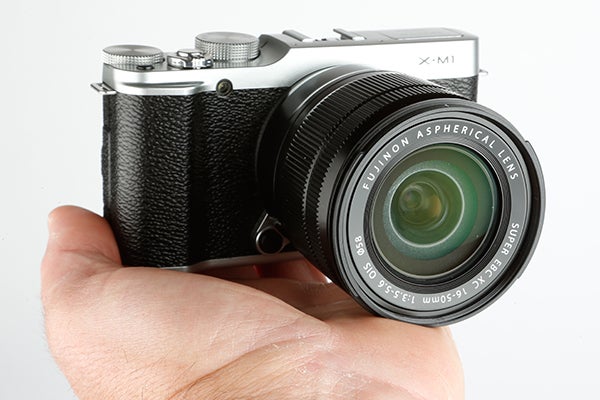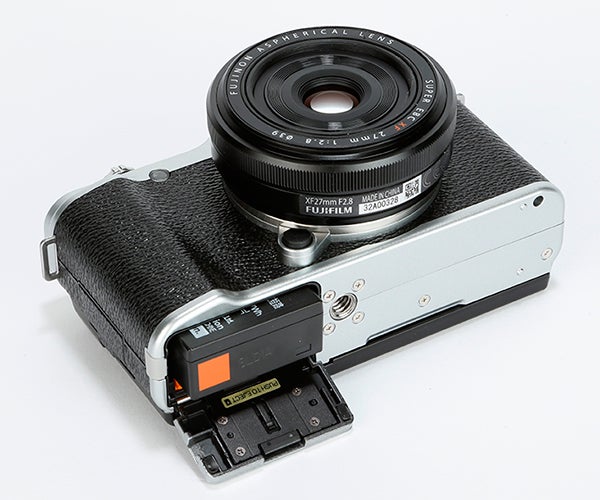Fujifilm X-M1 Review
Fujifilm X-M1
A small, retro-style camera that takes outstanding photos

Sections
- Page 1 Fujifilm X-M1 Review
- Page 2 Design and Performance Review
- Page 3 Image Quality and Verdict Review
Verdict
Pros
- Retro styling
- Solid build quality
- Good results provided by X-Trans sensor
Cons
- High price-tag
- No viewfinder or option for one
- No touchscreen
Key Specifications
- Review Price: £679.00
- 16.3MP APS-C X-Trans sensor; Fujifilm X lens mount; 3-inch, 920k-dot tilt-angle LCD screen; ISO 200 – 6400; 1080 (30p) HD video
What is the Fujifilm X-M1?
Fujifilm’s range of Compact System Cameras (CSCs) has a selection of models that cater for enthusiast and professional photographers, including the X-Pro1 and the X-E1. The new X-M1 is an altogether different proposition – it’s both the smallest and the lightest CSC yet produced by Fujifilm, and aims at more mainstream users. Like a lot cameras these days, it has a slightly retro exterior, but on the inside it has all the latest features anyone could want.
Not what you’re looking for? Try our round-up of the top 10 best cameras.

Fujifilm X-M1: Features
One of the ways in which Fujifilm has managed to make the Fujifilm X-M1 so small is by dispensing of any sort of viewfinder. Where the X-Pro1 has a clever hybrid viewfinder and the X-E1 a high-end EVF, the X-M1 has neither and has no facility to add an external one, either.
Instead, photographers will have to rely on the 3-inch, 921k-dot LCD screen housed on the rear of the camera. The screen itself is of the vari-angle variety and as such can be tilted should bright light be causing issues with framing and viewing images.

The X-M1 is the first X-series model to feature Wi-Fi connectivity. When used in conjunction with the Fujifilm Camera App on smartphone or tablet, users can access a host of functionality including transferring images, reviewing images and geo-tagging. What you can’t do over the Wi-Fi connection, however, is operate the camera remotely – a feature that is offered on most rival cameras.
One element that the X-M1 shares in common with other X-series models is the presence of an X-Trans CMOS sensor complete with its unique sensor array. The X-Trans CMOS sensor is APS-C in dimensions and features a resolution of 16.3MP, with the aforementioned sensor array promising minimisation of moiré patterning and false colour, as well as sharper results. It has a native ISO range of 200-6400, but this can extend from 100 to 25,600 should the need arise.
For the AF (auto-focus) system, Fujifilm has once again opted for the tried and tested system found in other X-series cameras. It’s a 49-point AF set-up that incorporates a clever Focus Peaking system that highlights areas in focus when adjusting focus manually.

Previous X-series models were relatively sparse on shooting controls, offering PASM (Program, Aperture, Shutter, Manual) options and little more. The X-M1, however, adds a host of auto shooting modes as well, which should make it a more attractive proposition for the entry-level photographer
The model debuts with a brand new kit lens in the shape of the XC 16-50mm. It’s the first lens in the X-series to carry the XC designation, and does away with the aperture / control ring found in the XF series of optics.
In the pursuit of keeping costs down no doubt, the lens itself is predominantly plastic – including the lens mount – although this does make it lighter than standard optics.

